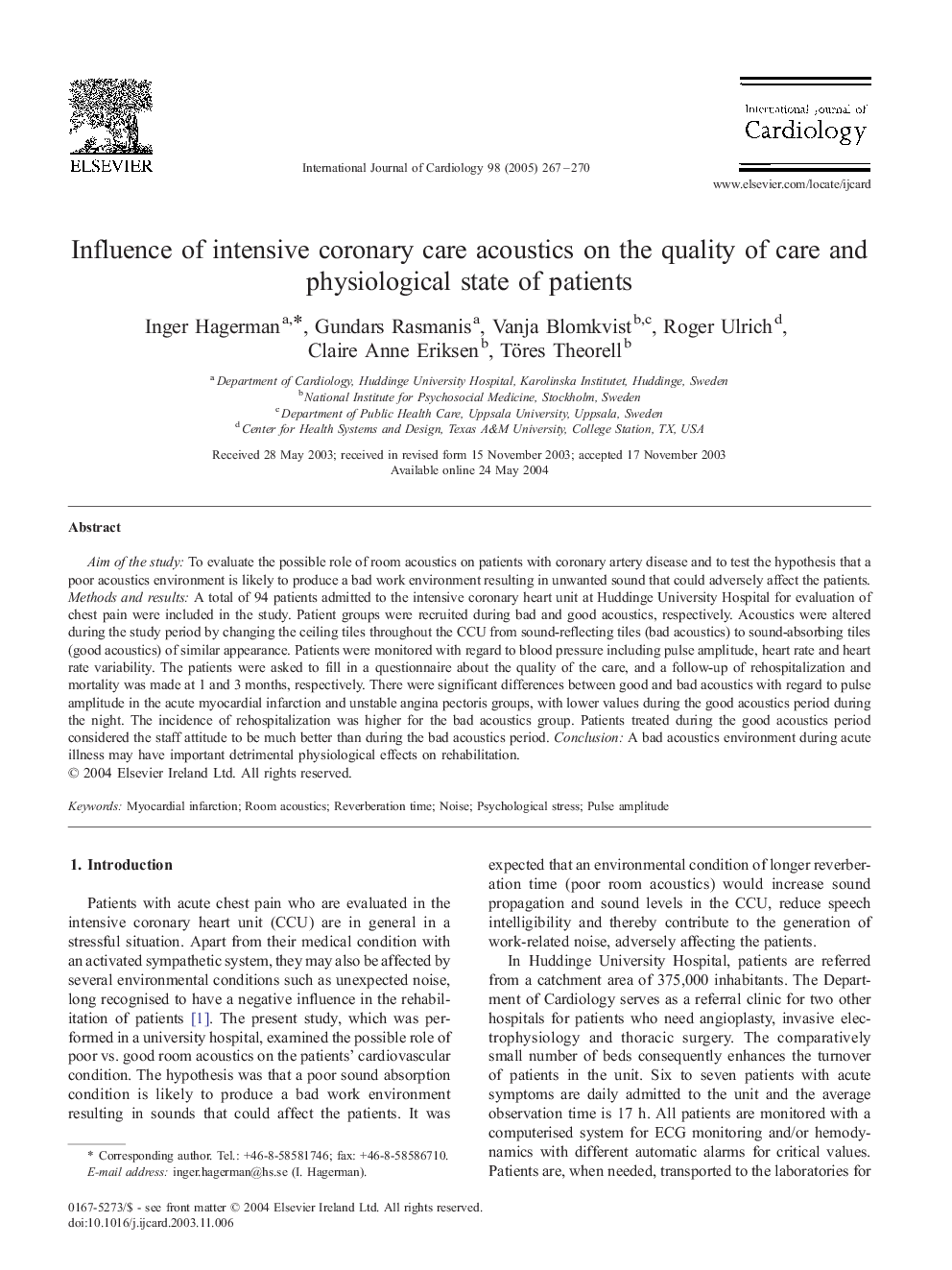| Article ID | Journal | Published Year | Pages | File Type |
|---|---|---|---|---|
| 9957125 | International Journal of Cardiology | 2005 | 4 Pages |
Abstract
Aim of the study: To evaluate the possible role of room acoustics on patients with coronary artery disease and to test the hypothesis that a poor acoustics environment is likely to produce a bad work environment resulting in unwanted sound that could adversely affect the patients. Methods and results: A total of 94 patients admitted to the intensive coronary heart unit at Huddinge University Hospital for evaluation of chest pain were included in the study. Patient groups were recruited during bad and good acoustics, respectively. Acoustics were altered during the study period by changing the ceiling tiles throughout the CCU from sound-reflecting tiles (bad acoustics) to sound-absorbing tiles (good acoustics) of similar appearance. Patients were monitored with regard to blood pressure including pulse amplitude, heart rate and heart rate variability. The patients were asked to fill in a questionnaire about the quality of the care, and a follow-up of rehospitalization and mortality was made at 1 and 3 months, respectively. There were significant differences between good and bad acoustics with regard to pulse amplitude in the acute myocardial infarction and unstable angina pectoris groups, with lower values during the good acoustics period during the night. The incidence of rehospitalization was higher for the bad acoustics group. Patients treated during the good acoustics period considered the staff attitude to be much better than during the bad acoustics period. Conclusion: A bad acoustics environment during acute illness may have important detrimental physiological effects on rehabilitation.
Keywords
Related Topics
Health Sciences
Medicine and Dentistry
Cardiology and Cardiovascular Medicine
Authors
Inger Hagerman, Gundars Rasmanis, Vanja Blomkvist, Roger Ulrich, Claire Anne Eriksen, Töres Theorell,
